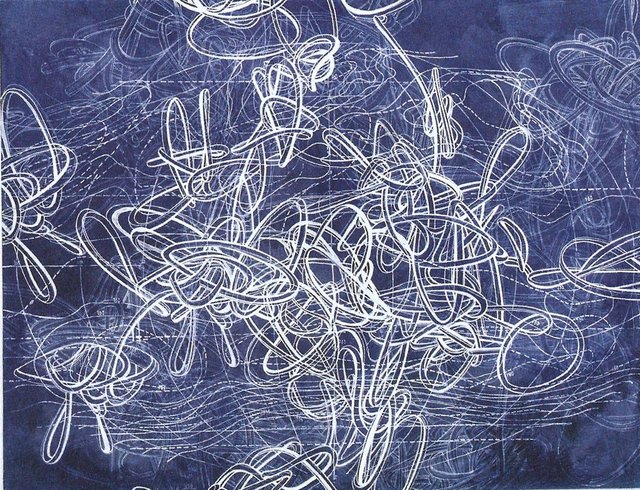String theory

String theory is a fundamental model of theoretical physics that basically assumes that the material particles, apparently punctual, are actually "vibrational states" of a more basic extended object called "rope" or "filament".
According to this proposal, an electron is not a "point" without internal structure and zero dimension, but a mass of tiny strings that vibrate in a space-time of more than four dimensions. A point can do nothing but move in a three-dimensional space. According to this theory, at the "subatomic" level it would be perceived that the electron is not actually a point, but a rope in the form of a loop. A rope can do something besides moving; It can oscillate in different ways. If it oscillates in a certain way, then, we would subatomically see an electron; But if it oscillates differently, then we would see a photon, or a quark, or any other particle of the standard model. This theory, enlarged with others like superstrings or M theory, aims to move away from the point-particle conception.
The following formulation of a string theory is due to Jöel Scherk and John Henry Schwarz, who in 1974 published an article in which they showed that a theory based on one-dimensional objects or "strings" instead of point particles could describe the force Gravitational. Although these ideas did not receive much attention at that time until the first revolution of Superstrings of 1984. According to the formulation of string theory emerged from this revolution, string theories can actually be considered a general case of Kaluza-Klein quantum theory. The fundamental ideas are two:
The basic objects of the theory would not be point particles, but extended one-dimensional objects (in the five conventional string theories these objects were one-dimensional or "strings"; currently in the M-theory are also supported of dimension Superior or "P-branas"). This renormalizes some infinite of the disturbing calculations.
The space-time in which the strings are moved and P-branes of the theory would not be the ordinary space-time of four dimensions, but a space of type Kaluza-Klein, in which to the four conventional dimensions are added six compacted dimensions in the form of Variety of Calabi-Yau. Therefore conventionally in string theory there is a temporal dimension, three ordinary spatial dimensions and six compacted and unobservable dimensions in practice.
The unobservability of the additional dimensions is linked to the fact that they would be compacted, and would only be relevant to small scales compared to Planck's length. Similarly, with the conventional measurement precision the closed strings with a length similar to the Planck length would resemble point particles.

Following the introduction of string theories, it was considered the desirability of introducing the principle that the theory should be supersymmetric; That is to say that it admitted an abstract symmetry that related fermions and bosons. Currently, most string theorists work on supersymmetric theories; That is why string theory is now called superstring theory. This last theory is basically a supersymmetric string theory; In other words, it is invariant under supersymmetry transformations.
There are currently five superstring theories related to the five modes known to implement supersymmetry in the string model. Although such a multiplicity of theories baffled the specialists for over a decade, current conventional knowledge suggests that the five theories are borderline cases of a single theory over an eleven-dimensional space (the three of space, one temporal and six Additional rewise or "compacted", and one that encompasses them forming "membranes" from which some of the gravity of them could escape in the form of "gravitons". This unique theory, called M theory, of which only some aspects would be known, was conjectured in 1995.